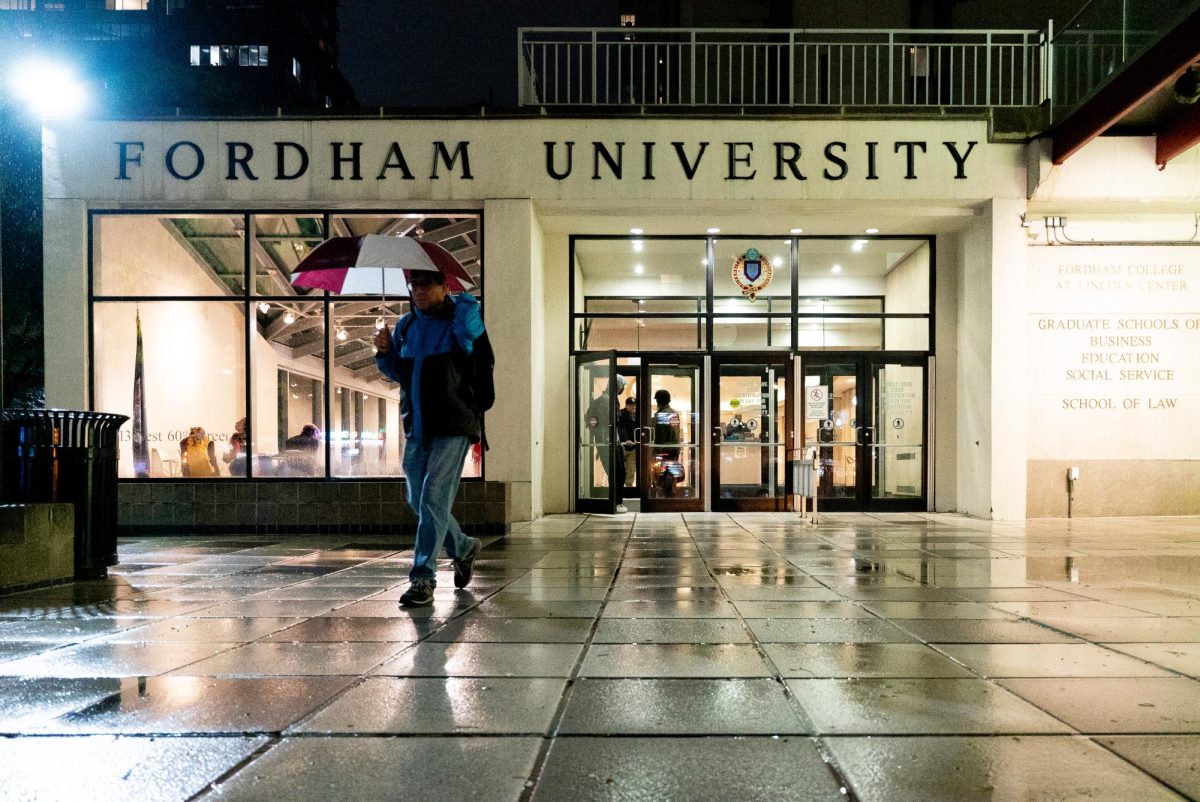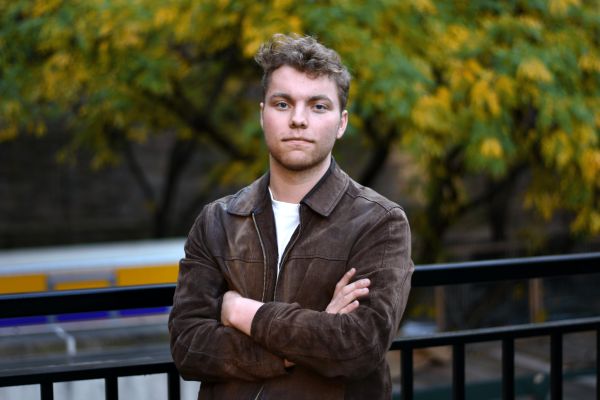New York City has faced record-setting heavy rains in recent months, resulting in unpredictable commute patterns, broken umbrellas, underground subway seclusion and the loss of sunshine for Fordham students.
The New York Times reported that New York City only saw 12 weekends to date in 2023 without rainfall in Central Park, and heavy rainfall has set records in some parts of the city.
The weather station at John F. Kennedy International Airport in southeast Queens recorded 8.05 inches of rain on Sept. 29, according to the public weather data from the National Oceanic and Atmospheric Administration. That figure has set the new record for the most rainfall recorded since the inception of that weather station in 1948.
For some students, excessive precipitation has led to serious danger.
Anya McGoldrick, Fordham College at Rose Hill ’24 and a student-worker for the university’s transportation department, said that excessive rain has posed a risk to Ram Van drivers and noted that harsh weather conditions increase the chances of experiencing a road accident.
She also shared that Ram Vans run the risk of hydroplaning due to their large size and, to avoid this risk, drivers are advised to steer clear of the flooded shoulders by driving in the middle lane of the highway.
There are parts of the route, however, where water is an unavoidable obstacle.
“When you go over a puddle, you’re like, ‘Oh my gosh. I could lose control at any time,’” McGoldrick said.
Driving in the rain is not a once-a-year event: Ram Van drivers shuttle students between the university’s Rose Hill and Lincoln Center campuses in every type of weather. When the rain is particularly heavy, however, McGoldrick said flooding is common and noted that compared to last year, the flooding is “a lot worse so far.”
Other water-related hiccups can contribute to delayed schedules and late students, as even the simple problem of water on the ticketing tablets can make it hard to board effectively. On a larger scale, though, these hazardous driving conditions can become what McGoldrick called a “safety issue.”
Plinio Gonzalez, director of university transportation at Fordham, confirmed that rainy weather conditions heighten the risk of accidents for Ram Van drivers. He also pointed out that on Sept. 29 — the day major flooding occurred and caused disruptions throughout New York City’s transit system — Ram Van drivers successfully ferried students between campuses without any complaints or accidents. Furthermore, he noted that if a driver expressed a desire to not drive, “they don’t have to drive.”
With other students, these excessive rains and weather conditions have been a barrier to their fall plans.
According to Missy Lalo, Fordham College at Lincoln Center ’26, cold and rainy conditions mixed with humid subways are a recipe for unpleasant commutes. On a recent trip downtown, Lalo was not sure if she was drenched more from the rain or sweat. At another point, she noted a massive puddle form in the middle of a once unpaved road.
“Before they repaved the road, it was so bad,” she said. “There was no way of escaping that corner without getting your socks wet.”
With the sun less present, Lucía Barberena, Professional and Continuing Studies ’24, has looked into getting her daily vitamin D intake some other way. She added that she has been looking into investing in sun lamps because she is a “big sun lover.”
Barberena shared that Friday afternoons had meant basking in the stress-free rays of the weekend, but with the onslaught of rain, her plans were often disrupted.
According to climate experts, changing weather conditions might not be going away soon.
Stephen Holler, associate professor of physics at Fordham, has extensive experience in weather monitoring. He noted that the amount of quick, intense rain is what differentiates a rainy season from storms caused by global-heating.
“What’s attributable to climate change is the amount of rain that comes down all at one time,” he said.
According to Holler, a warming planet, while seemingly incompatible with a cold rainy day, is actually the very reason for the storms. Defined simply, “a warmer atmosphere holds more water.”
Both Holler and Rohit Aggarwala, — the Chief Climate Officer for New York City, both are in agreement upon the idea that New York City will continue to see more intense weather.
“It was frightening, but what’s even scarier is we know more of these events are coming,” Aggarwala said on Oct. 11, before a New York City Council session. “We have had three record-breaking rainfalls in the last two years. This September was the wettest month the city has experienced in 100 years.”
“The sad reality is our climate is changing faster than our infrastructure can respond,” Aggarwala explained on the day of the major flooding-events. Despite hopes for a quick solution, he noted that “changing infrastructure takes time.”
Meanwhile, Fordham students may continue to see intense weather disrupt their everyday lives. For those most knowledgeable about our changing climate, these patterns aren’t going to suddenly cease. Aggarwala concluded that the growing frequency of these storms is so certain that they constitute, in his words, “our new normal.”


